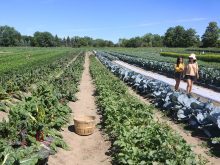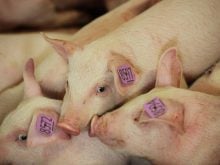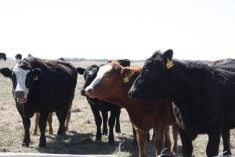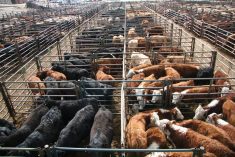There’s nothing like rain showers and good prices to put a smile on a
dejected farmer’s face.
That was the experience of Fred and Sharon Isayew at Prince Albert,
Sask., after they staged their first llama production and consignment
sale on Aug. 31.
With a sale topper of $40,000, the event renewed faith among llama
breeders whose industry has been declining in recent years.
Like other farmers across Saskatchewan and Alberta, Isayews’ pastures
were drying up, water was in short supply and livestock prices were
Read Also

VIDEO: Ag in Motion documentary launches second season
The second season of the the Western Producer’s documentary series about Ag in Motion launched Oct. 8.
bottoming out.
Just before sale day, the showers started and their farm turned green.
More than 500 people flocked to White Star Llama and Suri Alpaca Farm
for a sale that turned into a barn burner.
Their 38 animals averaged $7,939, about $2,000 more than the total sale
average on 68 animals that went to buyers from across Canada and the
United States.
The top seller was a bred female with a cria at side going for $40,000
to Sharon and Pat Tooley of Prince Albert.
Kris, Connie and Brad Kirkland of Montana spent $53,000 on two females
and a male.
New York buyer Linda Berry-Walker spent $37,000 on a young female.
The Isayews bought their first five animals in 1993. They bought their
first suri alpacas in 1997. On sale day they had 130 animals.
“We never realized we would end up with this scale,”said Sharon.
They decided a year ago they wanted to downsize with a production sale.
This was a calculated risk. Three years earlier they had introduced
drastic changes to their genetics program with the purchase of new
bloodlines from a Peruvian import group.
Their purchases were smaller in structure and style than the typical
large-framed, dense-fibre North American llama.
The fleece difference was most noticeable.
These were suri-types that grow long, silky tendrils of fibre hanging
close to their sides. Lustrous and silky, suri fibre spins into luxury
yarn.
The Isayews already owned a male named Yukon with kinky, draping
fleece. He won some competitions and piqued their interest in finding
more suri genetics.
“We quietly went back to the farm and started developing these,” she
said.
Their new generation animals started winning at shows and sweepstake
events.
“It was something people had to get used to it and accept.”
American breeders have been quicker to adopt this new style animal.
However, the older style llamas do not have to be culled because they
are structurally powerful and blend well with a suri type.
“You’ve got half the program in the pasture. You just need the other
half and you’re off,” Sharon said.
“You need big strong North American females to breed these Peruvian
males to.”
A high percentage of the 30 to 40 babies born on their farm every year
carry the suri type fleece.

















